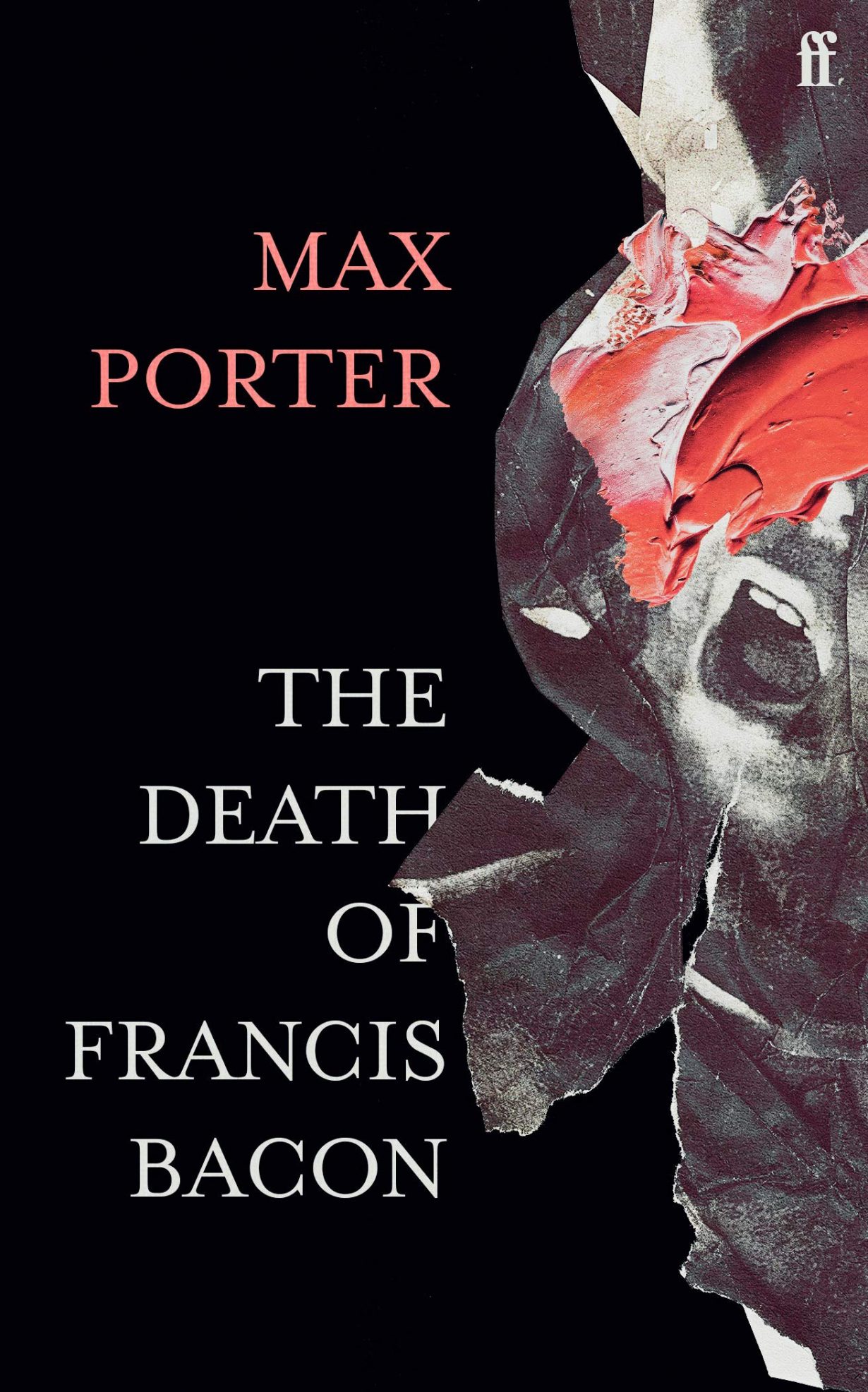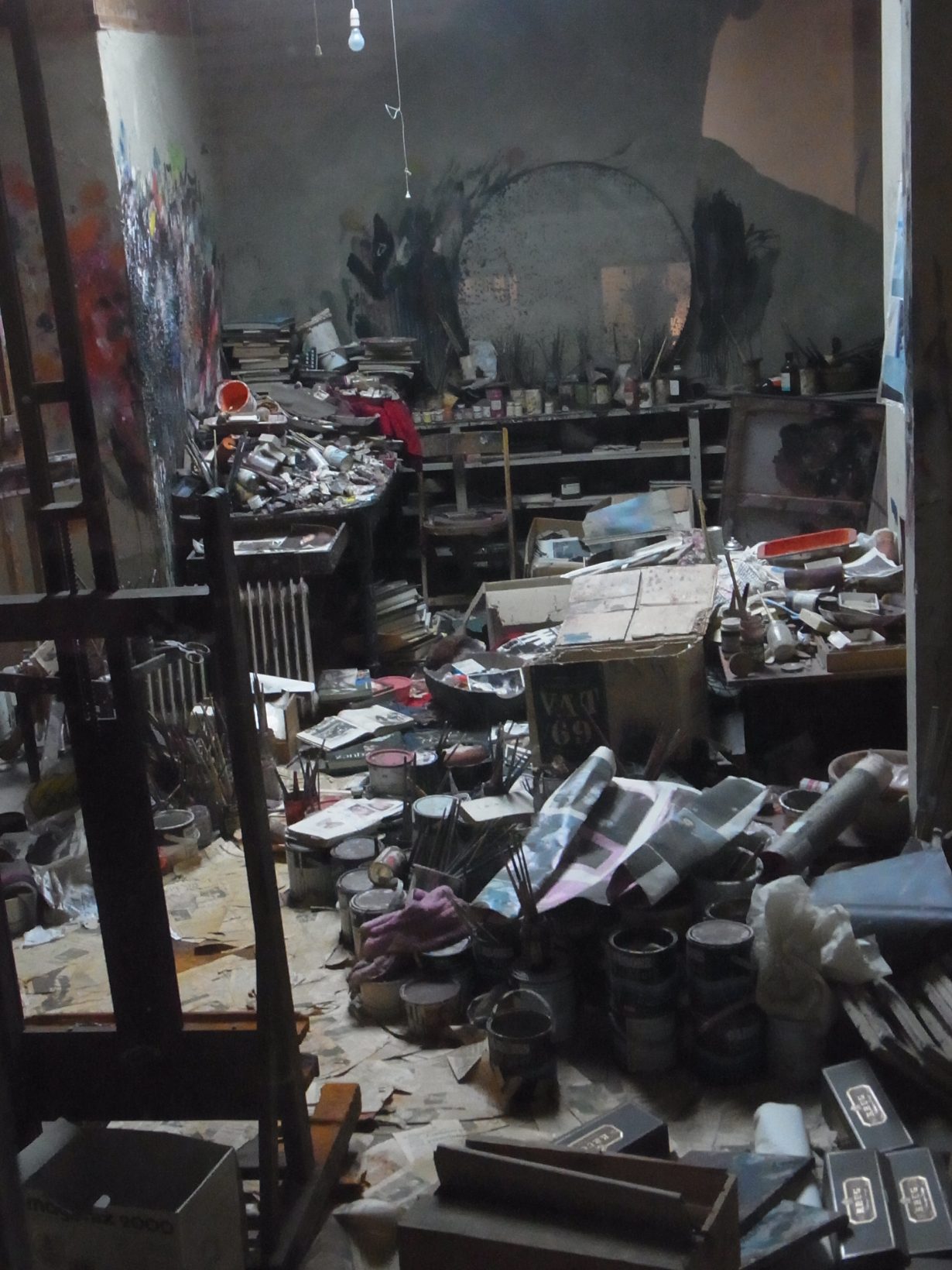
What does it mean to write a painting? Max Porter’s The Death of Francis Bacon describes the artist’s last days via eight scenes in a hospital room, each short chapter introduced as a work of oil on canvas or, in the case of a prefatory ‘sketch’, pencil on paper. The titles serve warning that this is not a conventional biography but an exercise in imitating the effects of images through language. The basic composition of each scene remains the same: the dying artist ‘pinned’ (nailed?) to his bed, a uniformed nurse named Sister Mercedes (‘chin stuck on like a dumpling, cheek like a chop’), and a chair occupied by a revolving cast of characters to whom the artist talks.
The style in which these studies are executed is, in homage to their subject, expressionistic and extemporaneous. Porter transplants the techniques of smearing, decontextualised signifiers and a suffocatingly shallow pictorial field (‘Frame or bed, hole could be window, flesh could be flat’) from Bacon’s paintings into short fragments marked by alliteration, internal rhyme and a splintered mise-en-page. The room is modelled through the bedbound Bacon’s consciousness, conversations with his interlocutors bleeding into vivid hallucinations and scattered memories. These are the processes, the book proposes, by which an artist’s (or writer’s) private store of obsessions and composites are resolved into works of art capable of transcending them.
Each chapter begins with Bacon’s invitation to his visitor to ‘take a seat’ and ends with the sister’s insistence that he needs to rest. Into that boxlike framing device, everything goes. The nurse reads to her patient of a martyred English king; the morphine prompts visions; Bacon obsesses over photographs of the mutilated Mussolini. These materials are stitched together by a narrative voice that makes no distinction between their sources, forcing the reader to work out what is drawn from the artist’s fevered memories and what is directly present in the ‘now’ of the hospital room. The compositional model here might be Bacon’s chaotic Soho studio – ghoulishly reconstructed after his death by Dublin’s Hugh Lane Gallery – and the image of the artist standing at his easel amidst a riot of images, channelling pornography, personal degradation and the Old Master paintings into works of extraordinary grace. ‘I can’t resist an unholy facial marriage, a quotation of sorts… You understand me. How I make these pictures work.’

This is also how stories work. Among the artist’s visitors is the author, who has come to explain the book that he is writing. It is, among other things, ‘an attempt to get art history out of the way and let the paintings speak’. Writing a book that makes no sense without prior knowledge of the artist’s biography is a curious way to let the paintings speak for themselves, not to mention that the voice given to Bacon, with its playful rhymes and pitter-patter rhythms, more closely resembles the glossolalic tricksters of Porter’s previous fictions (notably Crow in Grief is the Thing with Feathers, a 2015 love letter to another of the author’s ‘unfashionable’ heroes, Ted Hughes) than the painter’s own sardonic clip, notwithstanding the fruity concessions to period language (‘oh naff off you skag’).
The suspicion that this plea to ‘let the paintings speak’ – the rallying call of cultural conservatism – should be treated as authorial diversion or self-deprecation is buttressed by the book’s own asides to art history: to inform the reader that Bacon was obsessed with Picasso neither strips the paintings back to their naked selves nor adds to the scholarship, so must serve some other purpose. My guess is that these hints reveal more of the author than the artist. When the inevitable allusions to Velázquez arrive, my mind turned not to the popes that Bacon mutilated or the royal portraits he magpied but to Las Meninas (1656) and its complex network of gazes and perspectives. The author is here with his notebook, intruding on the scene, along with the reader. Who is the subject of these portraits, and who is their author?
Porter’s failure to convincingly capture Bacon’s voice is, by this measure, not a failing. The Death of Francis Bacon is less about ventriloquising a canonical painter than exploring the ways in which consciousness gives shape, and by extension meaning, to life’s chaos. Some of the source material for that art, our personal traumas, is private; some of it, like Bacon’s paintings or Alice Coltrane’s music, is public. Sister Mercedes, his confessor and torturer, at one point torments Bacon by reading John Berger’s dismissal of him as a ‘brilliant stage manager rather than an original artist’ on the grounds that the emotion of his paintings is ‘concentratedly and desperately private’.
Porter’s literary project differs from Berger’s perspective in its faith that to give form to private suffering is to create a space in which it can be shared. By stepping into that space, by inhabiting a dead artist’s work and mind, he proposes that even the most private suffering is made accessible to others by art, which is to say that it is redeemed. Whether Bacon would agree is another matter.
The Death of Francis Bacon, by Max Porter, published by Faber & Faber